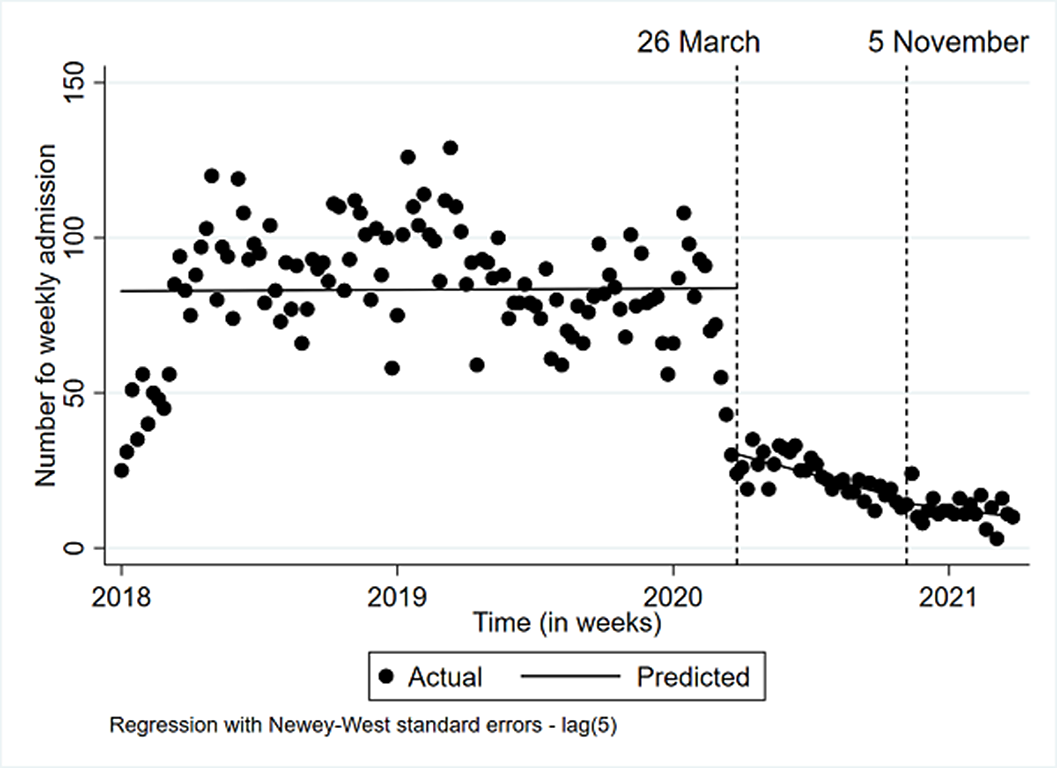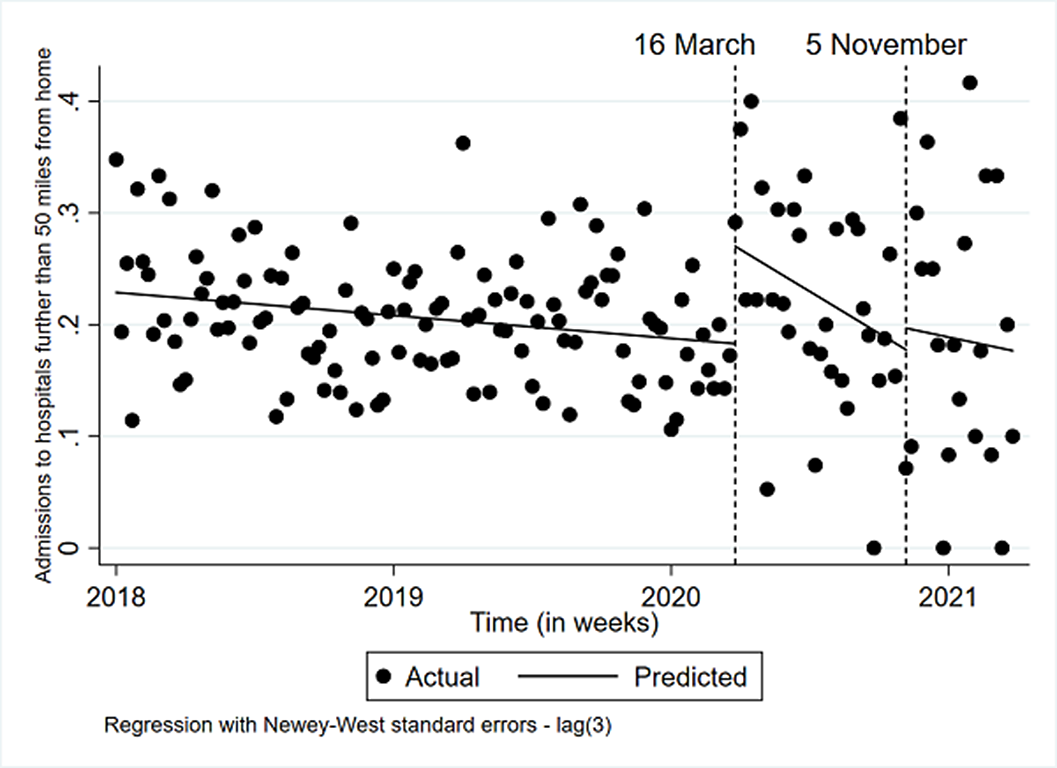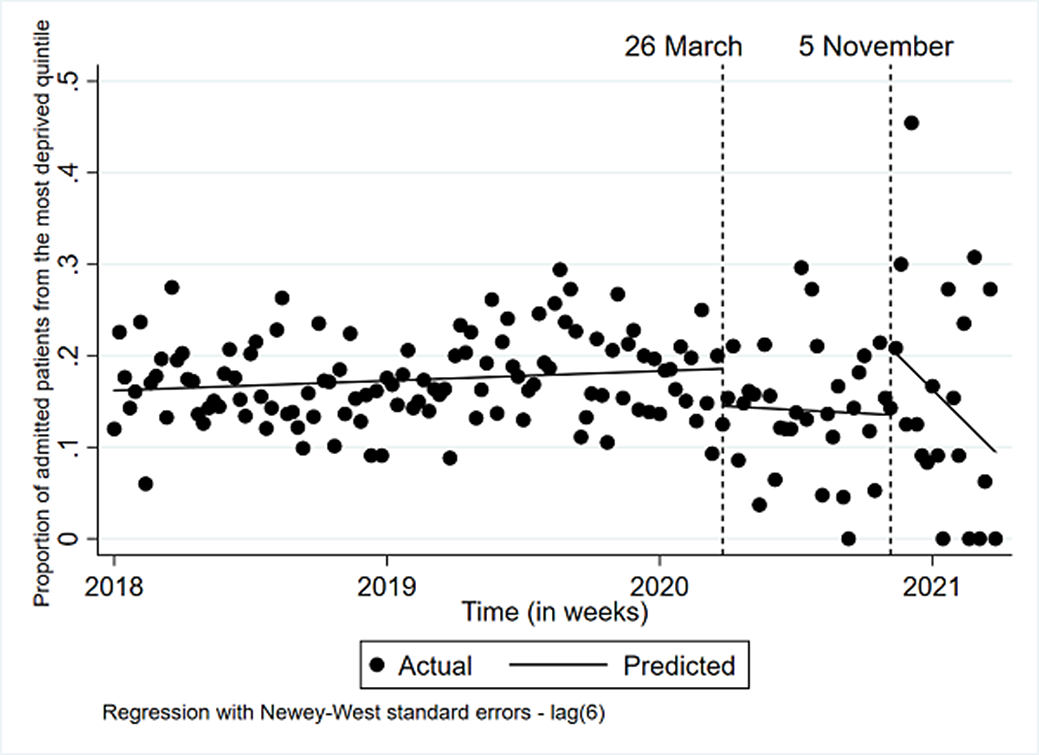319 results
Effectiveness of a WHO self-help psychological intervention to alleviate stress among healthcare workers in the context of COVID-19 in China: a randomised controlled trial
-
- Journal:
- Epidemiology and Psychiatric Sciences / Volume 33 / 2024
- Published online by Cambridge University Press:
- 07 March 2024, e11
-
- Article
-
- You have access
- Open access
- HTML
- Export citation
China’s prevention and control experience of echinococcosis: A 19-year retrospective
-
- Journal:
- Journal of Helminthology / Volume 98 / 2024
- Published online by Cambridge University Press:
- 02 February 2024, e16
-
- Article
-
- You have access
- Open access
- HTML
- Export citation
83 Efficacy of a Tablet-Based Cognitive Flexibility Intervention in Youth with Executive Function Deficits
-
- Journal:
- Journal of the International Neuropsychological Society / Volume 29 / Issue s1 / November 2023
- Published online by Cambridge University Press:
- 21 December 2023, pp. 184-185
-
- Article
-
- You have access
- Export citation
89 A Pilot Study of a Parent-Delivered Game-Based Cognitive Intervention in Children Born Preterm
-
- Journal:
- Journal of the International Neuropsychological Society / Volume 29 / Issue s1 / November 2023
- Published online by Cambridge University Press:
- 21 December 2023, pp. 189-190
-
- Article
-
- You have access
- Export citation
Research on model-free adaptive active flutter suppression based on ridge regression
-
- Journal:
- The Aeronautical Journal / Volume 128 / Issue 1323 / May 2024
- Published online by Cambridge University Press:
- 18 September 2023, pp. 950-965
-
- Article
- Export citation
Automatic enrollment with a 12 percent default contribution rate
-
- Journal:
- Journal of Pension Economics & Finance , First View
- Published online by Cambridge University Press:
- 11 September 2023, pp. 1-31
-
- Article
- Export citation
Measuring photometric redshifts for high-redshift radio source surveys
-
- Journal:
- Publications of the Astronomical Society of Australia / Volume 40 / 2023
- Published online by Cambridge University Press:
- 19 July 2023, e039
-
- Article
-
- You have access
- Open access
- HTML
- Export citation
The impact of the COVID-19 pandemic on children and adolescent mental health inpatient service use in England: An interrupted time-series analysis of national patient records
-
- Journal:
- European Psychiatry / Volume 66 / Issue S1 / March 2023
- Published online by Cambridge University Press:
- 19 July 2023, pp. S340-S341
-
- Article
-
- You have access
- Open access
- Export citation
A deep learning-based approach to time-coordination entry guidance for multiple hypersonic vehicles
-
- Journal:
- The Aeronautical Journal / Volume 127 / Issue 1310 / April 2023
- Published online by Cambridge University Press:
- 10 February 2023, pp. 604-626
-
- Article
- Export citation
PERFORMANCE AND INTER-COMPARISON TESTS OF THE MICADAS AT THE RADIOCARBON LABORATORY OF LANZHOU UNIVERSITY, CHINA
-
- Journal:
- Radiocarbon / Volume 65 / Issue 1 / February 2023
- Published online by Cambridge University Press:
- 06 December 2022, pp. 41-50
- Print publication:
- February 2023
-
- Article
- Export citation
Comparison of crop yield and solar thermal utilization among different rice–wheat cropping systems
-
- Journal:
- The Journal of Agricultural Science / Volume 161 / Issue 1 / January 2023
- Published online by Cambridge University Press:
- 08 November 2022, pp. 40-50
-
- Article
- Export citation
Inside Look into Catalytic Condenser for Programmable Solid Acids using STEM
-
- Journal:
- Microscopy and Microanalysis / Volume 28 / Issue S1 / August 2022
- Published online by Cambridge University Press:
- 22 July 2022, pp. 2412-2413
- Print publication:
- August 2022
-
- Article
-
- You have access
- Export citation
Exsolution of Core-Shell Nanoparticles in a Complex Concentrated Perovskite Oxide Thin Film Synthesized in One Step
-
- Journal:
- Microscopy and Microanalysis / Volume 28 / Issue S1 / August 2022
- Published online by Cambridge University Press:
- 22 July 2022, pp. 2470-2471
- Print publication:
- August 2022
-
- Article
-
- You have access
- Export citation
P.020 Long-term safety and tolerability of atogepant 60mg once daily for preventive treatment of migraine: a phase 3, 40-week, multicenter extension to the advance trial
-
- Journal:
- Canadian Journal of Neurological Sciences / Volume 49 / Issue s1 / June 2022
- Published online by Cambridge University Press:
- 24 June 2022, p. S13
-
- Article
-
- You have access
- Export citation
A NEW
 $\boldsymbol {q}$
-ANALOGUE OF VAN HAMME’S (A.2) SUPERCONGRUENCE
$\boldsymbol {q}$
-ANALOGUE OF VAN HAMME’S (A.2) SUPERCONGRUENCE
- Part of
-
- Journal:
- Bulletin of the Australian Mathematical Society / Volume 107 / Issue 1 / February 2023
- Published online by Cambridge University Press:
- 20 May 2022, pp. 22-30
- Print publication:
- February 2023
-
- Article
- Export citation
Analysis of anteroposterior-to-transverse ratio in predicting thyroid malignancy on ultrasonography
-
- Journal:
- The Journal of Laryngology & Otology / Volume 137 / Issue 5 / May 2023
- Published online by Cambridge University Press:
- 14 February 2022, pp. 546-550
- Print publication:
- May 2023
-
- Article
- Export citation
Structure of the thermal boundary layer in turbulent channel flows at transcritical conditions
-
- Journal:
- Journal of Fluid Mechanics / Volume 934 / 10 March 2022
- Published online by Cambridge University Press:
- 21 January 2022, A45
-
- Article
-
- You have access
- Open access
- HTML
- Export citation
Control of laminar breakdown in a supersonic boundary layer employing streaks
-
- Journal:
- Journal of Fluid Mechanics / Volume 932 / 10 February 2022
- Published online by Cambridge University Press:
- 15 December 2021, A53
-
- Article
-
- You have access
- Open access
- HTML
- Export citation
Mapping the genetic architecture of suicide attempt and suicide death using polygenic risk scores for clinically-related psychiatric disorders and traits
-
- Journal:
- Psychological Medicine / Volume 53 / Issue 6 / April 2023
- Published online by Cambridge University Press:
- 18 November 2021, pp. 2689-2697
-
- Article
- Export citation
Dairy consumption and cardiovascular disease events, bone fracture and all-cause mortality
-
- Journal:
- Proceedings of the Nutrition Society / Volume 80 / Issue OCE5 / 2021
- Published online by Cambridge University Press:
- 27 October 2021, E230
-
- Article
-
- You have access
- HTML
- Export citation
















